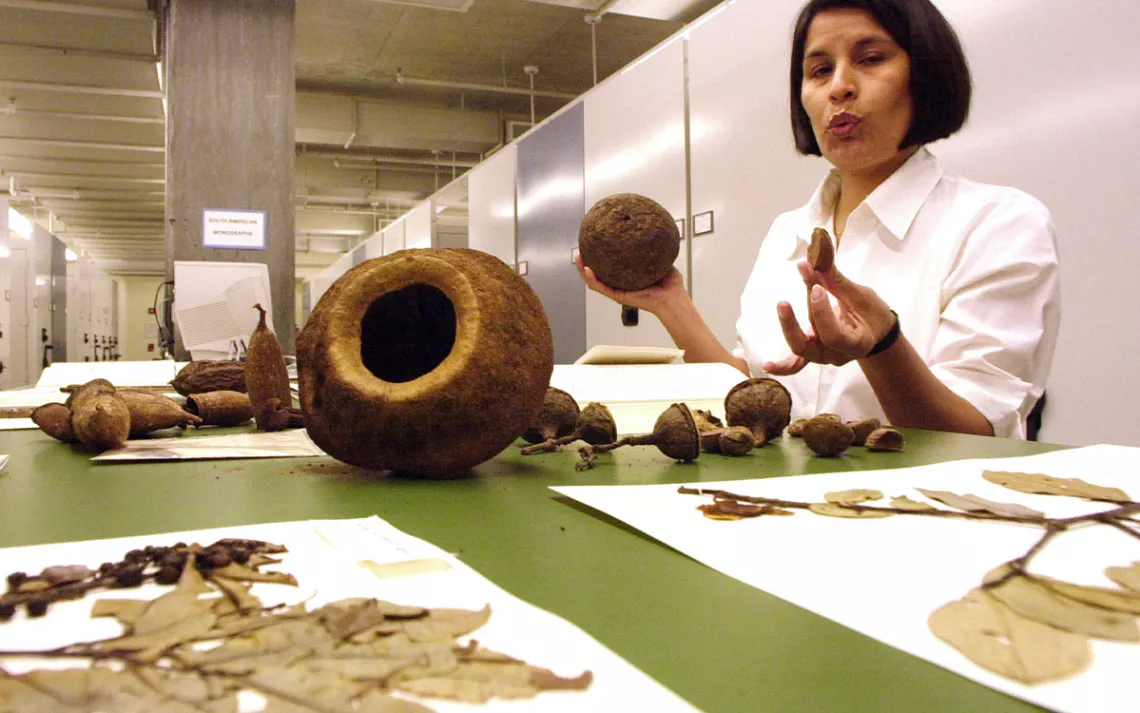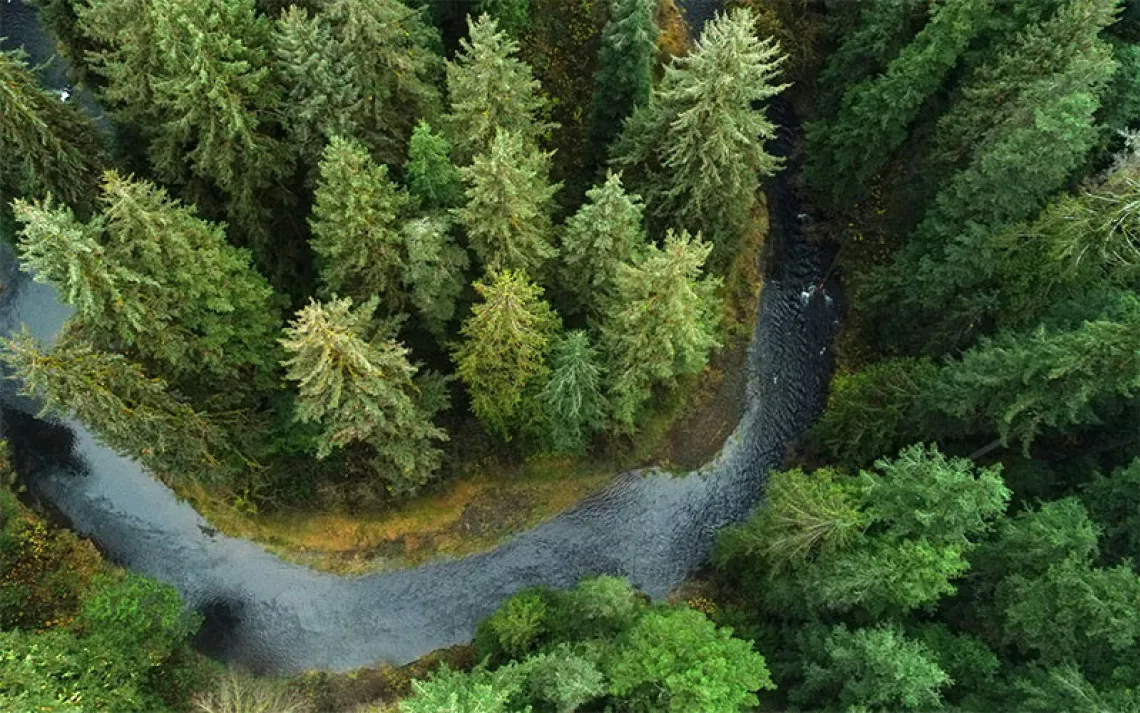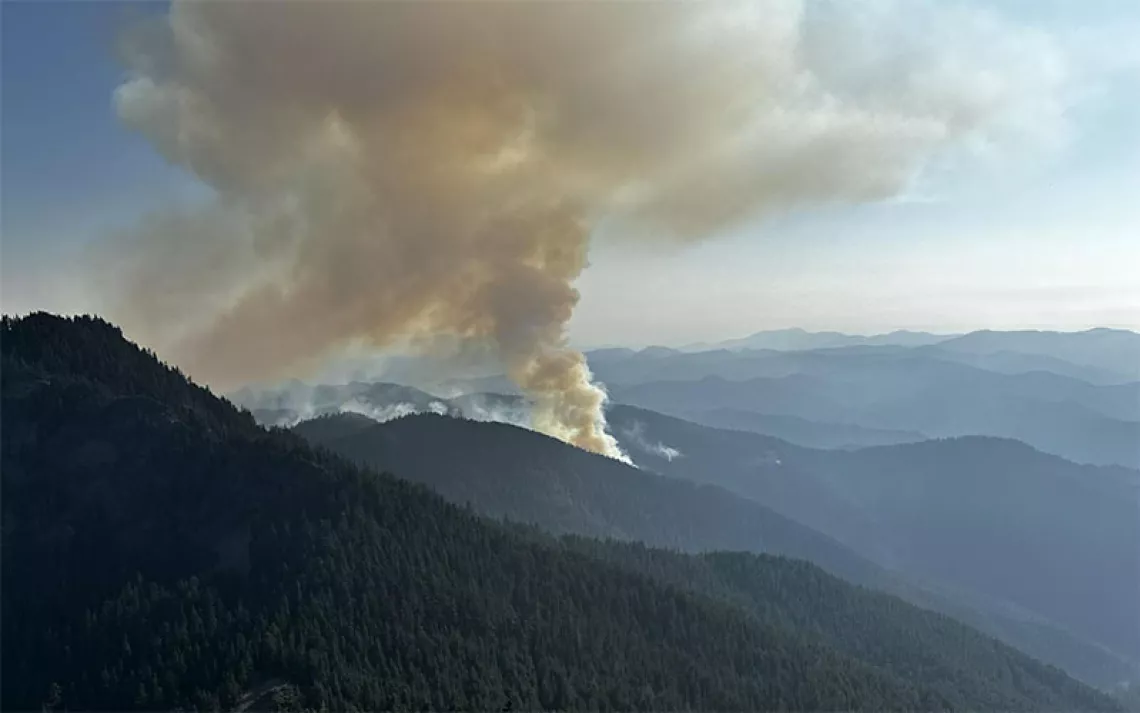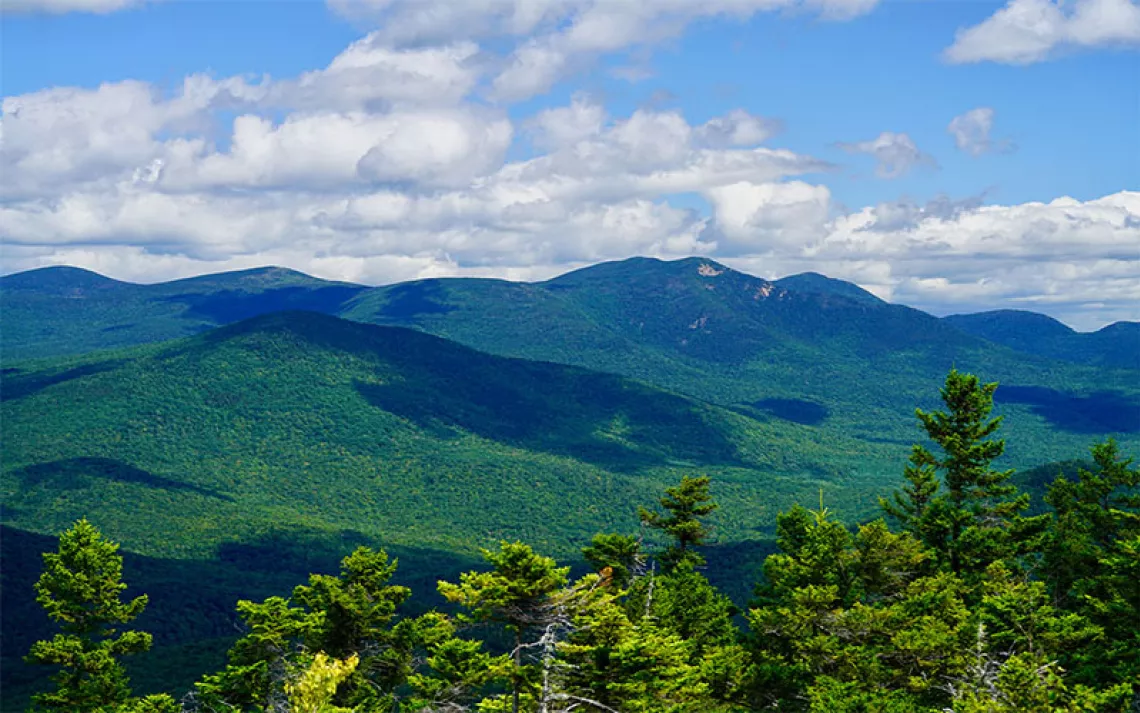The Largest Herbarium in Brazil’s Amazon Is Under Threat
A crucial resource for understanding carbon sequestration could go up in flames without necessary investments

A researcher studies a Brazil nut specimen at the New York Botanical Garden. Much of the scientific material from Brazil’s Amazon is held internationally, which will make research for scientists in Brazil that much more difficult if Manaus' Institute for Amazonian Research doesn’t survive. | Photo by Ed Bailey, AP File
Everyone in the building had left for lunch when the largest herbarium in the Brazilian Amazon caught fire.
It was December 6, 2013, and there was a short circuit in one of the eight air conditioning units keeping cool more than 300,000 specimens of dried plants. The plants, housed in the National Institute for Amazonian Research (INPA), are a scientific linchpin to understanding and conserving one of the most diverse biomes and largest areas of carbon sequestration on Earth.
Worried the inadequate wiring in their decades-old building was a fire hazard, the small staff of researchers and technicians always flipped the circuit breakers off before leaving their workspace at the end of the day. But they had never thought of taking the precaution during much shorter periods of time, such as in the middle of the day when they all slipped out to eat.
A technician who was still in the building’s lobby smelled smoke and bolted back toward the herbarium where he and a colleague beat out the fire with sheets of cardboard usually used to mount the plants for study. That day, there happened to be no specimens waiting to be sorted on the wooden table that sits under the air conditioning unit.
“We were very lucky there weren’t any piles there that day to immediately catch fire,” says Mike Hopkins, curator of the herbarium since 2014. “The flames were already starting to spark toward the table. Another five or 10 minutes and the fire could have spread everywhere.”
Even though staff thwarted this particular fire just in time, they worry others will soon follow—and that’s just one concern on a long list of threats looming over the important research institute due to insufficient investments in its growth and maintenance.
If flames were to consume the herbarium, they would take with them almost 70 years of scientific research into the Amazon, a region that, even today, is understudied. One of three important collections that make up the institute’s nine scientific archives—and a crucial resource for scientists from a vast array of disciplines—the herbarium’s loss would strand researchers without references for new work and add its name to the long list of scientific and cultural institutions that have gone up in smoke after being left to languish.
Founded in 1954, the research institute is located in Manaus, at the junctures of the Amazon River and the Rio Negro. Housed in three small buildings, its zoological, botanical, and microorganism collections are constantly growing, whereas its funding—which mostly comes from small federal government grants—and its physical space are not.
“If you come visit us, you’ll see there’s a staircase that goes to nowhere,” says Fernanda Werneck, coordinator of INPA’s scientific collections and curator of its amphibians and reptiles archive. “We still need to finish the two missing floors just to house the rest of our zoological archives. Since I arrived [10 years ago] we’ve had mammal archives in the hallways. There are things we can’t even get in here.”
Most of the researchers who come to consult the botanical collection are interested in it for taxonomy purposes, which identifies, names, and classifies species. Taxonomy was once the primary way scientists learned about the environment and is still an important piece of the puzzle today, laying out not only characteristics of each species but also helping scientists see connections among them. In order to determine if a new specimen brought into the herbarium is actually a new species, it’s necessary to look at the specifications of what scientists have already categorized there.
The best way to do that is generally with specimens that include a flower or a fruit, but in the Amazon most of the plants are trees, and many of them only flower once every five or 10 years. That makes this herbarium different: The scientists who reference its collections to understand Amazonian plants and their importance in several areas, including environmental sciences, pharmaceutical sciences, and cosmetics, could actually utilize leafy specimens, but there’s only room to keep the rare flowers and fruits.
One such important Amazonian tree in the collections is Eschweilera coriacea, which plays an important role in capturing carbon in the rainforest and is commonly known as matamatá. Priscila Souza, a botanist who carried out research at the herbarium between 2017 and 2021 for her doctoral dissertation, discovered the tree is actually several species as opposed to just one. Understanding their different morphological characteristics will help scientists better study and plan for their conservation.
Her discovery wouldn’t have been possible without access to the information the herbarium provided, and her continuing research has taken her back to the herbarium to collect further historical data housed there.
“If we didn’t have [this herbarium], we would have to rely on collections in other countries, because a lot of scientific material from the Amazon is spread around the world,” she says. “It’s really sad to see the herbarium in the state it’s in.”
Over the next 10 years, Hopkins would like to see the number of specimens in the herbarium at least double. In 50 years, he hopes to have enough space for at least 2 million. But without significant investments in growing and maintaining its infrastructure—to, among other things, forestall future fires—he knows it’s something that will remain out of reach.
“There’s much more investment these days in what they call sexy sciences,” says Hopkins. “Taxonomic work, which is absolutely important, absolutely fundamental, isn’t one of them.”
Those who have worked at the herbarium recognize that Hopkins goes above and beyond to take care of the collection, often putting in extra hours on weekends to resolve problems. The lack of investment in the research institute, Souza says, is a reflection of the lack of value put on the work done by the herbarium’s curator and those who carry out research there.
The botanist also had a close call with a fire in the herbarium. When she flipped a light switch in a room she planned to work in, the bulb short-circuited and sparked. She ran and turned the power off, but not before smoke started to seep from the socket. Installing a sprinkler system is a no-go, as water poses as much of a threat to a dried plant collection as fire, and Hopkins doesn’t have the funds for a specialized system that puts out fires with gas. In the meantime, he’s installed a fire alarm to at least alert staff, “but the question is, will there be anybody around to hear it?” he wonders. “There’s still a blackened area on the wall [from the 2013 fire]. I’ve left it there—I haven’t painted over it—because I want people who visit to see it. I want them to see the risk.”
That risk is present for the institute’s other collections too.
While plant specimens are highly flammable because they are dried and mounted on cardboard, many zoological and microorganism specimens carry that same concern because they are often preserved in alcohol.
“If INPA’s work was lost, it would be almost irrecoverable,” Pedro Wongtschowski, a chemical engineer and media commentator, told Sierra in an interview. He wrote an op-ed alongside two colleagues for one of Brazil’s national newspapers after visiting the institute in 2023 and becoming concerned by its dilapidation. “What they have there are things that were collected during weeks- or months-long expeditions in the Amazon that can’t easily be found again, if at all,” he says. “It’s decades of work that is still relevant today and that is crucial for scientists to continue their research for years to come.”
And if the power goes out—or is turned off over the weekend, like the researchers have been doing for fear their work will go up in flames—the hot and humid temperatures of Manaus, a city built in the middle of the world’s largest tropical rainforest, mold becomes a concern too.
“Our collections are the knowledge libraries of the Amazon,” says Werneck. “We work in the most biodiverse place in the world. That’s why we fear losing everything that’s been done here. The responsibility we have is huge.
 The Magazine of The Sierra Club
The Magazine of The Sierra Club



